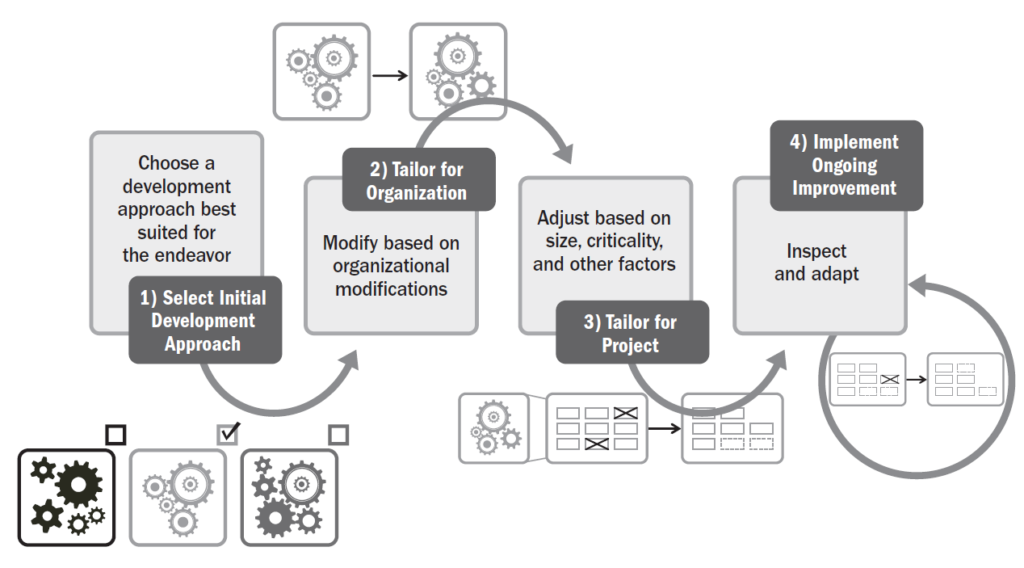Artifacts are indispensable tools in project management, serving as the backbone for communication, decision-making, tracking, and performance evaluation. The PMI PMBOK 7th Edition categorizes artifacts not merely as documents but as dynamic enablers of value delivery throughout the project lifecycle. This in-depth blog explores the most commonly used artifacts in alignment with the PMBOK 7th Edition, discussing their purpose, integration, evolution in agile and hybrid approaches, and practical tips for implementation.
1. Introduction
In project management, clear communication, traceability, and proper documentation are vital. Artifacts act as the vessels for these essentials. While previous editions of the PMBOK Guide focused on processes and outputs, the 7th Edition repositions artifacts as fundamental elements within a performance-based system, emphasizing outcomes and value. This shift acknowledges the evolving nature of project delivery and highlights the importance of artifacts across diverse project environments.
2. Understanding Artifacts in the PMBOK 7th Edition
The PMBOK 7th Edition defines artifacts as templates, documents, outputs, or deliverables that support project management efforts. They are grouped within the context of the project performance domains and are not rigidly tied to process groups or knowledge areas.
Artifacts are critical for:
- Communicating plans and progress
- Recording decisions and actions
- Managing risks, scope, costs, and quality
- Enabling transparency and accountability
3. Key Categories of Artifacts
PMI outlines several categories of commonly used artifacts:
- Plans: Include management plans (e.g., scope, schedule, cost, quality).
- Logs and Registers: Used to record data such as issues, assumptions, and stakeholders.
- Reports: Communicate information like status, forecasts, and performance.
- Agreements: Contracts and formal documentation of commitments.
- Deliverables: Tangible or intangible outcomes created during the project.
- Business Documents: Business case, benefits management plan.
4. Commonly Used Artifacts in Each Project Performance Domain
Let’s examine artifacts within each of the eight performance domains identified in PMBOK 7th Edition.
4.1 Stakeholder Performance Domain
- Stakeholder Register: Documents identification, analysis, and engagement strategies.
- Communication Management Plan: Describes communication requirements, frequency, and channels.
4.2 Team Performance Domain
- Team Charter: Defines team roles, values, agreements, and decision-making methods.
- Work Assignments and Performance Feedback: Records team responsibilities and performance metrics.
4.3 Development Approach and Lifecycle Domain
- Development Approach Document: Outlines chosen methodologies (predictive, agile, hybrid).
- Lifecycle Description: Clarifies project stages and phase gates.
4.4 Planning Performance Domain
- Project Management Plan: Consolidated blueprint for execution, monitoring, and control.
- Scope/Schedule/Cost Baselines: Approved versions used for performance measurement.
4.5 Project Work Performance Domain
- Issue Log: Tracks current and resolved issues.
- Change Log: Records change requests and their statuses.
- Work Performance Data: Raw data collected during execution.
4.6 Delivery Performance Domain
- Requirements Documentation: Captures stakeholder and business needs.
- Work Breakdown Structure (WBS): Decomposes project scope into manageable units.
- Product Backlog (Agile): Prioritized list of deliverables.
4.7 Measurement Performance Domain
- Performance Reports: Summarize KPIs and project health.
- Earned Value Analysis Reports: Provide cost and schedule performance metrics.
- Risk Reports: Highlight top risks and mitigation status.
4.8 Uncertainty Performance Domain
- Risk Register: Identifies, evaluates, and monitors risks.
- Assumption Log: Tracks assumptions and constraints.
- Decision Log: Records rationale for key decisions.
5. Project Artifacts in Agile, Hybrid, and Predictive Environments
Artifacts adapt based on the delivery method:
- Agile: Uses artifacts like sprint backlogs, user stories, and increment reviews.
- Hybrid: Blends traditional baselines with Agile artifacts like Kanban boards.
- Predictive: Relies heavily on formal documentation and baselines.
6. Strategic Importance of Artifacts
Artifacts provide the foundation for:
- Governance: Ensuring compliance and accountability
- Knowledge Transfer: Supporting learning and reuse in future projects
- Value Delivery: Aligning actions to stakeholder expectations and business goals
7. Challenges in Managing Artifacts
- Information Overload: Too many documents can hinder efficiency.
- Version Control: Lack of centralized storage leads to confusion.
- Accessibility: Remote and hybrid teams may struggle with document access.
8. Best Practices for Artifact Usage
- Tailoring: Customize artifacts to suit project size and complexity.
- Digitization: Use project management software and cloud platforms.
- Review Cycles: Regular updates and validations.
- Training: Ensure teams understand purpose and use of key artifacts.
9. Real-World Examples
Example 1: Construction Project
- Used a detailed WBS and earned value reports to control scope and costs.
Example 2: IT Product Development
- Employed Agile artifacts like product backlog and burndown charts.
Example 3: Government Infrastructure Initiative
- Maintained robust risk registers and stakeholder communication plans.
10. Conclusion
Artifacts, as outlined in the PMBOK 7th Edition, are more than administrative necessities—they are strategic tools for project success. By selecting the right artifacts, tailoring them to fit the project environment, and ensuring their consistent use, project managers can enhance clarity, improve decision-making, and align project outputs with stakeholder needs. As project management continues to evolve, so too will the role of artifacts, but their core value in promoting discipline, transparency, and outcomes will remain indispensable.



